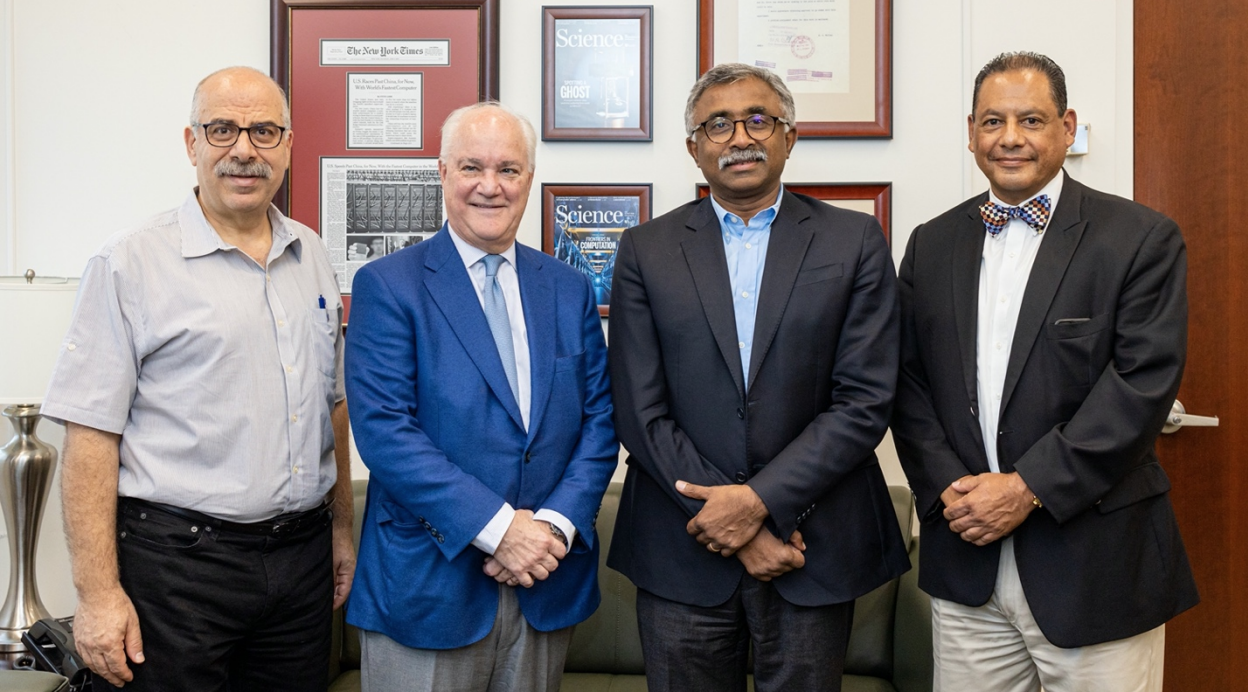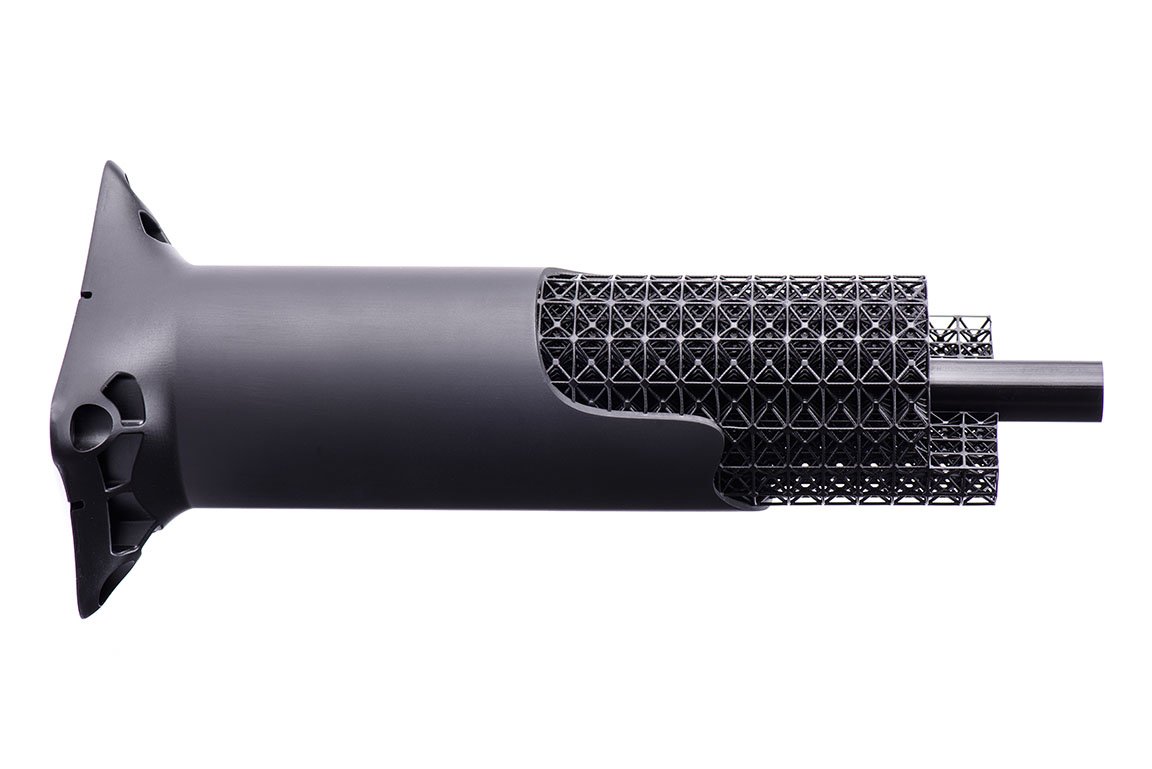Once common in the industrial, transportation, residential, and commercial sectors, coal in the United States has mainly been used to generate electricity for the last forty years. But with demand for coal declining as cleaner-burning alternatives, hit historically low prices, coal producers had to either prepare for the worst or adapt to survive. Luckily, in terms of innovation, scientists have found entirely new uses for the mineral that could fuel a new carbon-based high-tech manufacturing industry.
In the US, efforts are already underway to convert coal into advanced materials, such as carbon fibers, graphene-based medical devices, and even carbon resins, which can be used in advanced manufacturing such as 3D printing.
The big potential of coal has not gone unnoticed by carbon tech company Ramaco Carbon. Since 2014, the firm has pioneered the concept of creating a “Carbon Valley” in which coal’s low-cost carbon, together with new research and modern manufacturing techniques, can synergistically be used to develop advanced carbon products and materials. Now, the firm has partnered with the US Department of Energy (DOE)’s Oak Ridge National Laboratory (ORNL) to explore innovations that can convert coal into advanced, high-value carbon products and materials.
Since coal is mainly composed of carbon, researchers at the firm are searching for possibilities that expand the commercial use of coal’s carbon and chemical properties and help move the coal-to-products field forward. Based in Sheridan, Wyoming—the largest coal-producing state in the US—Ramaco Carbon has focused on the use of coal to create advanced carbon products and materials. Last year, the company’s CEO announced the creation of a vertically integrated carbon tech platform, the nation’s first, which includes Ramaco’s coal mine in Wyoming, the iCAM (Carbon Advanced Materials) research park campuses in Wyoming and West Virginia, and the future iPark mine-mouth manufacturing facilities that will use coal from the Brook mine to create high-value carbon products with zero net emissions.

At Oak Ridge National Laboratory during an executive visit by Ramaco Carbon, from left to right: Moe Khaleel, Randall Atkins, Thomas Zacharia, and Edgar Lara-Curzio (Credit: Carlos Jones/Oak Ridge National Laboratory)
Funded by DOE’s Office of Fossil Energy and Ramaco Carbon, this five-year umbrella cooperative research and development agreement (CRADA) will allow the national lab and the company to work together on new projects that use coal as a manufacturing feedstock for carbon fibers, building products, and composites, as well as electrodes for energy storage devices and new materials for additive manufacturing, including large-scale 3D printing.
“We are deeply honored to be partnered with the DOE’s leading innovator in advanced carbon materials and additive manufacturing,” said Ramaco Carbon chairman and CEO Randall Atkins. “We’re proud to have built our relationship with ORNL’s world-class team over the past several years, and are now excited to form a more direct partnership. We look forward to working alongside them to develop cutting-edge research into how we can utilize our nation’s most abundant resource — coal — to manufacture and commercialize high-value advanced products and new carbon materials. We hope that by working with ORNL and the other national labs, we can create novel ways to use coal to both stimulate the economy and help ensure our national security.”
For nearly four years, Ramaco Carbon and ORNL collaborated on related research under separate agreements, and the company is also a party to five current DOE grants in the coal-to-products field. Adding to that, in 2018 it already entered into a similar CRADA agreement with another DOE lab, the National Energy Technology Laboratory (NETL), which involved the use of coal to make graphene, carbon nanotubes, and to recover rare earth minerals.

Ramaco Carbon 3D prints carbon products, like this solid lattice made from carbon-derived rigid polyurethane (Credit: Ramaco Carbon)
This new agreement brings together ORNL’s chemical and materials science and engineering, computational science, and advanced manufacturing expertise with Ramaco Carbon’s coal-based research, manufacturing, and 3D printing facilities being developed near Sheridan, Wyoming.
“ORNL is pleased to work with Ramaco Carbon to push the boundaries of what is possible with our science and technology capabilities to support coal to product breakthroughs,” expressed Moe Khaleel, ORNL’s deputy for projects. “Oak Ridge has a rich history of scientific research and facilities supporting the nation’s exploration, production, and use of abundant, domestic fossil energy, and we look forward to continuing our mission in this area.”
As the largest science and energy laboratory of the DOE, Oak Ridge National Lab has experience investigating and developing new materials that can be used in additive manufacturing, as well as 3D printing technology. In 2014 the lab designed and produced the world’s first 3D printed car with partners Local Motors and Cincinnati Incorporated. More recently it earned a Guinness World Record for the world’s largest solid 3D printed item, a trim-and-drill tool for evaluation by The Boeing Company. Along the way, ORNL has printed vehicles, buildings, heavy machinery, and even a submersible, developed new kinds of 3D printing materials, as well as explored the possibility of producing a 3D printed nuclear reactor.
Furthermore, Ramaco Carbon’s interest in the development of coal-to-products aligns with areas in which ORNL has extensive expertise and background. ORNL is also home to the Carbon Fiber Technology Facility, DOE’s only designated user facility dedicated to carbon fiber innovation, with a customizable platform that validates new conversion technologies at a semi-production scale.
The United States has the world’s largest and cheapest coal reserves, with 28 percent of recoverable coal reserves, but most of that goes to power generation, something that may change in the near future as the coal industry is currently suffering the side-effects of the pandemic with investors realizing that coal produced and burned worldwide for power generation is not the cleanest bet. The mere five percent currently used to convert coal into higher-value specialized products, like 3D printing materials, could increase as demand heightens through the 21st century, but for now, we can expect this new partnership to move forward research into the development of advanced alternative uses for coal.
Subscribe to Our Email Newsletter
Stay up-to-date on all the latest news from the 3D printing industry and receive information and offers from third party vendors.
You May Also Like
IperionX Inks 10-Year Deal with Wisconsin Manufacturer for 80 Metric Tons of Titanium Per Year
IperionX, the Charlotte-based supplier of sustainable titanium powders used for additive manufacturing (AM) and metal injection molding (MIM), has signed a ten-year deal with United Stars, a group of industrial...
Gastronology Launches Industrial Production of 3D Printed Food for Dysphagia Patients
Food 3D printing has, in many ways, been an additive manufacturing (AM) segment looking for the right business case. While some applications are beautiful and others may or may not...
Lockheed Martin Leads $3M Investment in Q5D’s Electronics 3D Printing System
Q5D, an original equipment manufacturer (OEM) of robotic arm, hybrid additive manufacturing (AM) systems used for wire harness production, has closed a $3 million investment round. The investment arm of...
3D Printing News Briefs, April 6, 2024: Depowdering, Cybertruck Door Handles, & More
In today’s 3D Printing News Briefs, ioTech’s digital manufacturing CLAD technology is opening up opportunities for microelectronics and additive manufacturing. Hexagon and Raytheon Technologies commercially released the Simufact Additive Process...































